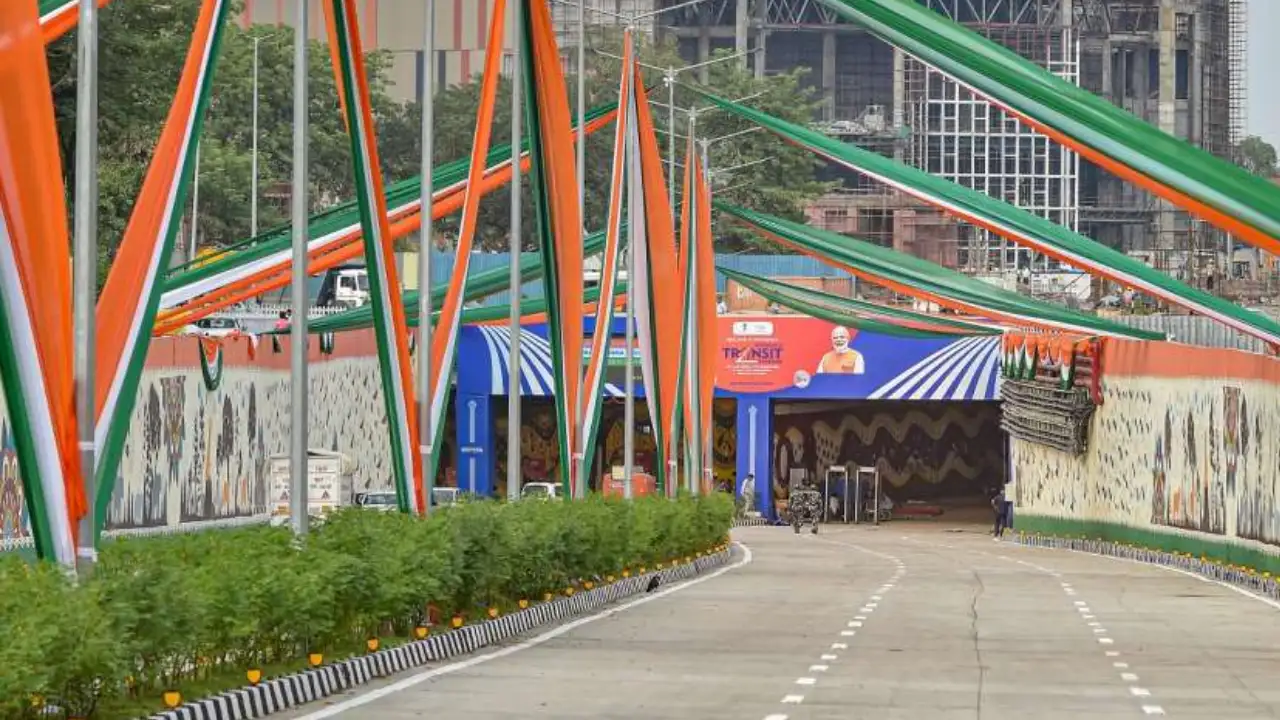By Avni Arya
Delhi: After years of delays, engineering setbacks and monsoon-related disruptions, Delhi’s final and most complex underpass project under the Pragati Maidan Integrated Transit Corridor has received the Centre’s nod, paving the way for construction to begin after the monsoon. Officials from the Public Works Department (PWD) confirmed that the work on this long-pending stretch will finally restart, with a completion timeline of around eight months, as per TIE report. A One-of-a-Kind UnderpassUnlike the other five underpasses and the main tunnel, all inaugurated by Prime Minister Narendra Modi in 2022, this last underpass is unique in its design. It will feature two uneven carriageways, where only one will be accessible to heavy vehicles, officials said. “The underpass will be uneven, but it will provide relief because only one lane is being used for both exit and entry at present. Due to this, traffic jams take place on the Ring Road. Once the stretch is fully functional, it will cut down the traffic on both the Ring Road and Bhairon Marg,” an official explained. With over 1 lakh vehicles plying daily on Ring Road alone, the completion of this stretch is expected to significantly ease traffic congestion in central Delhi. Challenges Beneath the TracksA 90-metre stretch of the underpass, connecting Bhairon Marg to Ring Road, was opened in March last year as a temporary relief measure. The PWD used barricades to allow partial traffic movement between Sarai Kale Khan and Ring Road. However, completing the remaining 110-metre portion has been a technical and logistical nightmare. The biggest challenge? The underpass runs directly beneath an active railway line and lies close to the Yamuna River, making it vulnerable to frequent flooding during monsoon. In 2023, construction ground to a halt when the concrete boxes, used in the ‘box-pushing’ method, got stuck and sank by 1.5 to 2 metres due to water-logging at the site. The ‘box-pushing’ technique, used to minimise disruption to rail traffic, involves pre-casting concrete boxes and pushing them under live rail lines using hydraulic jacks. When the method failed, the PWD sought expert advice from IIT Bombay and IIT Delhi. IITs to the RescueThe IITs recommended switching to a ‘cut-and-cover’ method, where the railway track is temporarily cut open, the tunnel constructed, and the track relaid. But this method required a 40-day window of railway downtime, a request the Railways denied last March. In response, the PWD again turned to the IITs, who then advised the use of a cast-in-situ method from the Ring Road side. This method, though less ideal, was considered the only practical option without halting train operations. It involves constructing the tunnel in place, rather than pushing pre-made boxes into the ground, although the settlement issues in the already-sunken boxes would not be corrected.
